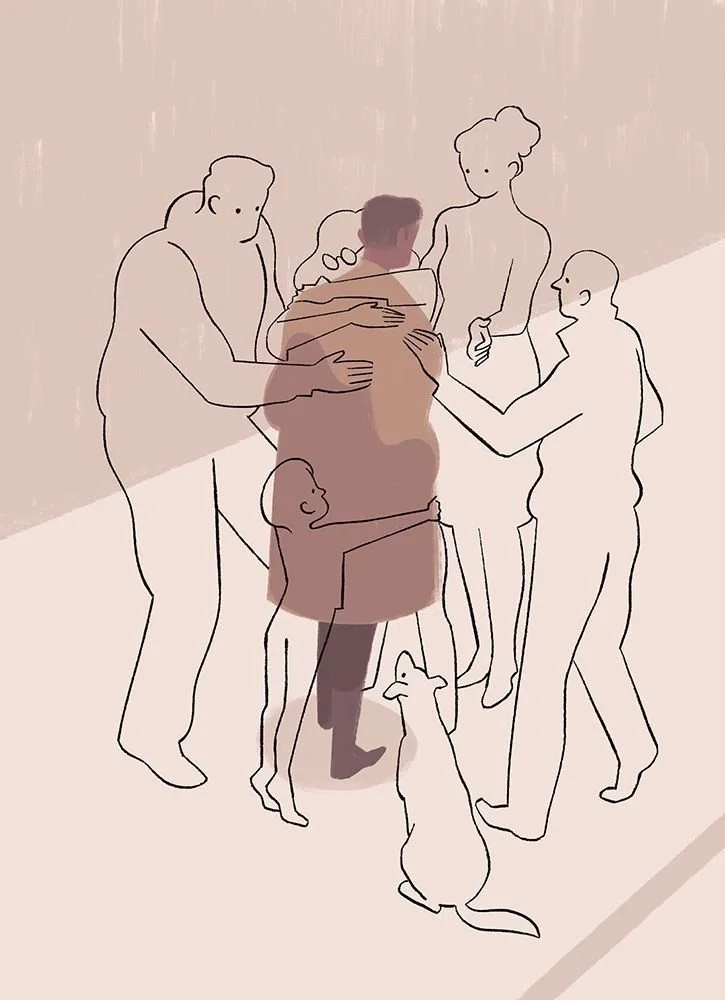Healing Through Attunement: The Power of a Responsive Therapist
For decades, psychotherapy trained clinicians to be neutral, observers rather than participants.
That neutrality was meant to protect objectivity. But research and lived experience now show what humans have always known: lasting change depends on connection, not detachment.
At Our Kind Therapy, we believe therapy should feel human, not just because it’s comforting, but because it’s clinically effective.
The Evidence: Connection as the Mechanism of Change
Across hundreds of studies, one variable predicts improvement more than any specific technique: the therapeutic alliance: the emotional bond, collaboration, and agreement on goals between client and therapist.
Meta-analyses (Horvath et al., 2011; Norcross & Lambert, 2018) show this alliance accounts for roughly 30-40 percent of treatment outcomes. It’s not simply about liking your therapist. It’s about whether their presence allows your nervous system to shift from defense into openness.
When safety is established through attuned responsiveness, the brain’s learning centers reactivate. Co-regulation with a grounded other engages the ventral vagal system (Porges 2011), reducing threat responses and restoring access to reflection and curiosity.
In other words: when connection is real, the body can finally learn something new.
People don’t heal through a neutral stance; they heal through attuned, regulated connection with a responsive therapist.
Why Emotional Distance Falls Short
A strictly neutral stance may preserve analysis, but it often limits attachment repair.
Clients who meet emotional detachment in therapy can unconsciously replay old patterns of self-reliance or guardedness, the very defenses they came to heal.
At Our Kind, therapists are trained to be regulated, not detached; responsive, not reactive.
We see the therapist’s tone, pacing, and micro-expressions as clinical tools. Every gesture either signals safety or re-activates threat.
Responsiveness doesn’t mean boundaryless warmth; it means using authentic presence on purpose, to model regulation, name tension, and repair ruptures rather than avoid them.
This is not indulgence. It is relational precision.
The Neurobiology of Feeling Human
Feeling safe and seen is not sentimental; it is neurobiological necessity.
When a person is met with genuine attunement:
The amygdala’s threat response quiets.
The insula heightens interoceptive awareness.
The mirror-neuron network supports empathy and resonance.
The hippocampus reprocesses memory in a new emotional context.
These changes mark the brain’s shift from protection to integration, the biological trace of feeling human.
Being Human Is a Discipline
“Feeling human” in therapy isn’t casual authenticity; it’s a trained discipline.
Therapists at Our Kind maintain dual awareness, tracking their own regulation while attuning to the client’s subtle cues: breath, tone, eye movement, muscular tension, dissociation, or emotional constriction.
They use that data to intervene precisely: slowing when the system needs containment, deepening when the moment is safe for expansion, naming what’s occurring between two people when avoidance appears.
Professionalism isn’t the absence of emotion; it’s the ability to stay emotionally present without losing stability.
From Insight to Experience
Many of our clients arrive with remarkable insight.
They understand their history and their patterns, but insight alone doesn’t reorganize the nervous system.
What creates change is experience: being met, respected, and emotionally joined while staying intact. That’s what restores a client’s capacity to relate without collapsing or performing.
Safety, in our view, isn’t the absence of challenge; it’s the presence of attunement through it.
The Core of Our Work
The Our Kind Method integrates attachment, psychodynamic, and experiential approaches because human beings are multi-layered systems, psychological, emotional, and physiological.
Our clinicians are trained to work across all three:
Psychological: narrative, identity, and meaning.
Emotional: expression, regulation, and integration.
Physiological: body awareness and nervous-system safety.
When these layers align, insight becomes embodied change, and that is what makes healing durable.
Final Reflection
Healing should feel human because being human is what heals.
Therapy that is emotionally precise, relationally alive, and grounded in neuroscience does more than reduce symptoms, it reorganizes how safety, trust, and connection are experienced from the inside out.
That is the work we do at Our Kind Therapy.
Ready to Experience This Work?
Written by Alaina Malik, LMHC



